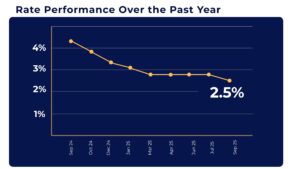Got questions about the real estate market this fall? You’re not alone. From rates to housing supply in Toronto and the GTA, here’s what’s really happening so whether you’re buying, selling, or just curious, you’ll stay ahead of the conversation.
Understanding the Real Estate Market in Toronto and the GTA
Whether or not we’re buying or selling a home, real estate is a topic that always seems to come up. At family dinners, coffee breaks at work, or even casual catch-ups with friends, someone will inevitably bring up house prices, interest rates, or what’s happening in the Toronto real estate market. Yet, when these conversations happen, many of us realize we’re not entirely sure about the details.
This blog is here to change that. If you’re actively planning to buy or sell, our goal is to give you the knowledge you need to make informed decisions. And if you’re not in the market right now, you’ll still walk away with a better understanding of the housing market, the economy, and the trends shaping Toronto and the GTA. That way, the next time real estate comes up in conversation, you’ll have something valuable to add.
Interest Rates: Where Do They Stand?
What are interest rates?
Interest rates are essentially the cost of borrowing money. When you take out a mortgage, the interest rate determines how much extra you’ll pay on top of the money you borrow. Even small changes in the rate can make a big difference in monthly payments, which is why they’re so closely watched in the real estate market.
They’re calculated based on the policy interest rate set by the Bank of Canada. From there, banks and lenders add their own margins, considering factors like inflation, the strength of the economy, and their own operating costs. For homebuyers, lenders also look at personal factors such as credit score, down payment, and loan type to decide the final rate offered.
One of the biggest factors shaping the real estate market is interest rates. They influence how much people can borrow, what monthly mortgage payments look like, and ultimately how affordable a home feels.
Looking at the Bank of Canada’s historical rates, we can see how shifts from 2.5% to 2.75% and beyond have directly impacted affordability and buyer sentiment.
Every quarter-point change can make a meaningful difference in monthly payments. For buyers, even a small decrease opens new opportunities, while for sellers, stable rates can help sustain market activity.

What do these declining interest rates mean for buyers and sellers?
- For Buyers: The timing couldn’t be better, interest rates have dropped, making mortgages more affordable. What may have felt out of reach just months ago could now be within your budget. It’s your chance to explore bigger options, secure better terms, and finally make that move you’ve been planning.
- For Sellers: With lower rates bringing more buyers into the market, demand is heating up again. A clever pricing strategy paired with great presentation can create the perfect conditions for a quick sale—and even spark competitive offers.
The silver lining? Stability. After several years of rapid rate hikes to control inflation, the Bank of Canada is showing signs of holding steady. While rates aren’t expected to drop dramatically in the short term, predictability allows both buyers and sellers to plan with a bit more certainty.
You might also be interested in: No Surprises: Closing Costs When Buying a Home in Canada Explained
Housing Supply in Toronto and the GTA
If interest rates shape affordability on one side, housing supply shapes it on the other. According to the Canada Mortage and Housing Corporation Fall Market Supply Report There are not enough homes and constructions to meet the growing demand.
Why Homes Are in Short Supply
- The Goal: Build enough homes to make housing more affordable across the country.
- The Problem: Construction is not keeping pace. Between high material costs, labor shortages, and elevated interest rates, building has slowed down.
- Regional Impact: The shortage is most severe in Ontario and British Columbia, particularly in urban hubs like Toronto and Vancouver.
- Projection: To reach true affordability by 2030, Canada would need millions of additional homes built.
What’s Happening Right Now in Construction, Rentals, and Resales?
- Condo Construction: While pre-construction condo sales have slowed, this creates unique opportunities for buyers and investors. With fewer new starts in early 2025, the lowest since 2009, today’s projects stand out as valuable long-term assets, especially since condos remain a cornerstone of urban housing supply.
- Rental Apartments: The story is slightly better here. Developers see rental housing as a safer bet, supported by strong long-term demand, which is keeping rental construction more stable.
- Resale Market: Listings for resale homes increased in the first half of 2025 compared to 2024, sitting well above historical norms. This creates competition for new builds and offers buyers more options than in recent years.
The bottom line: housing affordability in Toronto and the GTA remains challenging, and unless construction activity accelerates, the pressure is unlikely to ease significantly.
You might also be interested in: Finding Your Perfect Place: The 2025 Guide to Buying a Home in Ontario
Real Estate Market Trends You’ll Hear in Every Conversation
Beyond interest rates and housing supply, broader market trends are shaping how people live, work, and choose where to call home.
Back to the Office: What It Means for Where We Live
During the pandemic, remote work gave employees more freedom. Many people moved farther out from Toronto, into suburbs like Durham or Simcoe, enjoying larger homes and quieter communities.
But in 2025, the trend has shifted. Large employers, especially banks, telecom companies, and government offices, are asking staff to return to the office 4 or 5 days a week.
What does this mean for housing?
- Downtown Toronto: More people want to live closer to work again. This is driving higher demand for condos and rental apartments in the city core.
- Far Suburbs: Areas that boomed during the remote work era are losing some of their appeal. Long commutes are once again a barrier, which could put downward pressure on home prices.
- Near Suburbs: Places like Mississauga and Vaughan are holding up better. They’re close enough to the city for commuting, while still offering space and community amenities.
Suburbs vs. City Core
The pandemic years saw an incredible surge in suburban home prices. But as demand shifts back toward the city, suburban prices are beginning to normalize. Toronto’s core is seeing renewed attention, though affordability challenges limit how strong the rebound can be.
Why Office Buildings Still Matter to the Market
Office buildings aren’t just about workspaces. They anchor the financial value of downtown real estate, support banks and pension funds, and sustain surrounding businesses. If offices stay occupied, the broader economy benefits. That said, uncertainty remains high, and inflation continues to pressure household budgets.
Buyer, Seller, or Just Curious Here’s What to Know
So how do all these factors come together for you?
- If You’re Buying: Today’s market is all about strategic choices. By understanding borrowing costs and keeping an open mind about neighborhoods, you can discover hidden gems. With rental demand thriving, condos are shining again in areas where momentum is building.
- If You’re Selling: Price strategically. With more listings on the market, presentation and competitive pricing matter more than ever. Sellers in suburban areas should be mindful of shifting demand back toward Toronto.
- For Everyone Else: Even if you’re not active in the market, understanding these dynamics helps you follow the bigger economic picture and be part of the conversations that are shaping our communities.
The real estate market in Toronto and the GTA is complex, influenced by everything from interest rates and construction activity to office work trends and economic forces. While affordability challenges remain, knowledge is power.
At Cityscape, we know that navigating the real estate market can feel overwhelming at times. That’s why we’re here, to walk alongside buyers and sellers with guidance that’s not only professional, but personal. We listen to your goals, your lifestyle, and your budget, and help you find the path that truly fits. Even if you’re not ready to make a move right now, keeping in touch with the market means you’ll feel prepared when the moment comes.
You might also be interested in:












